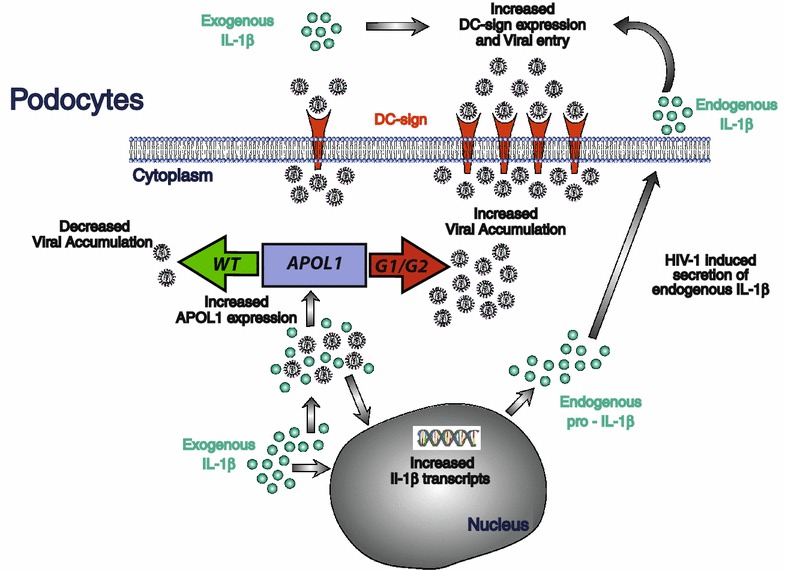Fig. 5.

Mechanistic insights regulating HIV-1 entry and persistence in human podocytes. High levels of IL-1β both in tissues and in blood characterize acute and chronic HIV-1 infection and can prime human podocytes in the context of the inflamed microenvironment of kidney glomerula. Indeed, exogenous IL-1β enhances HIV-1 entry via the up-regulation of DC SIGN and induces the production/secretion of endogenous IL-1β. In turn, the presence of both IL-1β and HIV-1 increase the expression of APOL1 within podocytes. In this context, the non-risk WT variant of APOL1 is key to control viral accumulation within podocytes and limit HIV-1 boarding. On the other side, the alternative presence of the high-risk G1 or G2 polymorphic variants of APOL1 increase the accumulation of HIV-1 in podocytes, thus worsening the vicious pathogenic inflammatory loop in podocytes. This can explain, at least in part, the higher frequency of HIVAN in populations carrying the high-risk genetic variants of APOL1 gene
